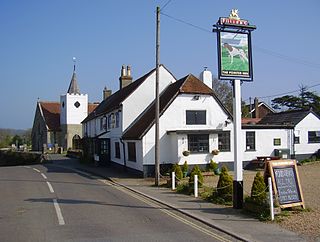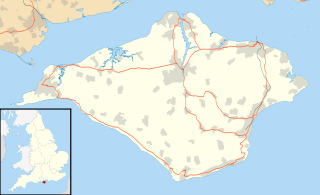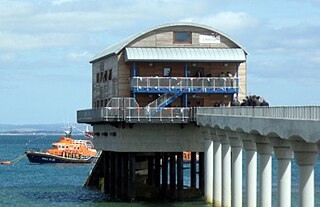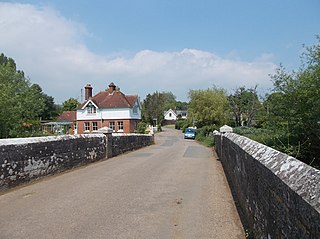
The Isle of Wight Steam Railway is a heritage railway on the Isle of Wight. The railway passes through 5 1⁄2 miles (9 km) of unspoiled countryside from Smallbrook Junction to Wootton station, passing through the small village of Havenstreet, where the line has a station, headquarters and a depot. At Smallbrook Junction, the steam railway connects with the Island Line.
The Isle of Wight Central Railway (IoWCR) was a railway company on the Isle of Wight, United Kingdom. It was formed in 1887 by the merging of three earlier railways, the Cowes and Newport Railway, the Ryde and Newport Railway and the Isle of Wight Railway,.

A cyclosportive, or often simply sportive, is a short to long distance, organised, mass-participation cycling event, typically held annually. The Italian term Gran Fondo is commonly used for these events in the United States, Australia and some other English-speaking countries.

Randonneuring is a long-distance cycling sport with its origins in audax cycling. In randonneuring, riders attempt courses of 200 km or more, passing through predetermined "controls" (checkpoints) every few tens of kilometres. Riders aim to complete the course within specified time limits, and receive equal recognition regardless of their finishing order. Riders may travel in groups or alone as they wish, and are expected to be self-sufficient between controls. A randonneuring event is called a randonnée or brevet, and a rider who has completed a 200 km event is called a randonneur. The international governing body for randonneuring is Audax Club Parisien (ACP), which works with other randonneuring organisations worldwide through Les Randonneurs Mondiaux (RM). Randonneuring is popular in France, and has a following in the Netherlands, Belgium, United Kingdom, Italy, Australia, United States, Canada, Brazil, Ireland, India and Japan.

Newchurch is a village and civil parish on the Isle of Wight. It is located between Sandown and Newport in the southeast of the island. Anthony Dillington, owner of the Knighton Gorges Manor in Newchurch wrote to his son Robert in 1574 that, "This is the very Garden of England, and we be privileged to work in it as Husbandmen......." Newchurch obtained its name from the new church built in 1087 by the Norman monks of Lyra. The Newchurch Parish for many centuries stretched from the north to south coasts of the Island; by the early Nineteenth Century the growing resort towns of Ventnor and Ryde were included within its boundaries. The present day parish includes Newchurch Village, Apse Heath, Winford, Whiteley Bank, Alverstone, Alverstone Garden Village, Queen's Bower, Princelett and Mersley.

Apse Heath is a hamlet on the Isle of Wight, UK. Apse Heath is centered on the intersection of Newport Road and Alverstone Road. At the 2011 Census the Post Office said the population of the hamlet was included in the civil parish of Newchurch, Isle of Wight. It is northeast of Whiteley Bank and south of Winford. Apse Heath is bordered by the leafy villages of Alverstone and Queen's Bower, and is surrounded by areas of woodland and agricultural land. It also sits roughly 2 miles east of the village of Newchurch, and 1 mile west of Lake.

Merstone is a quaint little hamlet on the Isle of Wight. It is home to Merston Manor, built in 1605 in the Jacobean style by Edward Cheeke, and rebuilt in the Victorian era. Merston Manor was first mentioned in the Domesday Book, and the present structure is arguably the oldest brick house on the Island. Prior to the Norman Conquest, Merston Manor was owned by the Brictuin family. The manor now belongs to the Crofts family. According to the Post Office the population of the hamlet was at the 2011 Census included in the civil parish of Arreton.

Wightbus was a bus operator on the Isle of Wight, owned by the Isle of Wight Council. It operated a network of 13 local bus services running across the island, mostly services which would not have been viable for the island's dominant commercial operator, Southern Vectis, to operate.
National Cycle Route 23 is a route of the National Cycle Network, running from Reading to Sandown. The partially signed route passes through Basingstoke, Eastleigh and Southampton; once across the Solent, it continues through Cowes and Newport.














